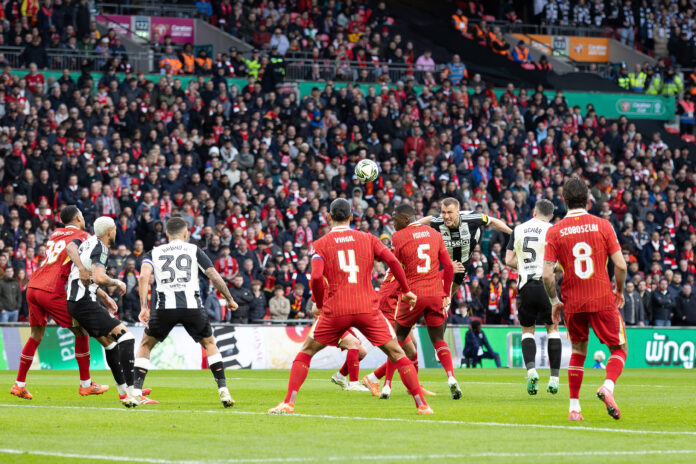For many fans, football is not just about matches on the field. It’s about the emotions they experience outside the stadium, the communication with like-minded people, and a real sense of belonging to the team. Football has become a part of everyday life, where fan meetings, fan zones, virtual platforms, and social networks play as important a role as the game itself. Today, fans have the opportunity to enjoy the game not only through the TV or at the stadium but also through various digital technologies, such as engaging with exciting experiences like bonus buy slots demo play. In this post, we will discuss how football culture extends beyond the pitch – through fan activities, online interactions, social media, and new opportunities that emerge from technology.
Virtual and Digital Experiences
Modern-day football fans are already leveraging digital technologies to experience the excitement of the game world even outside a stadium. Video games like football simulations like FIFA allow fans to experience the excitement of real matches. With realistic game graphics and gameplay strategies, gamers can not only manage their favorite teams but can also implement tactical plays, thus converting virtual football into an exciting and thrilling experience.
Live football streams and broadcasts online are another major aspect that brings the spectators nearer to the games. YouTube, Twitch and club websites provide the opportunity to watch the games live, and post comments on forums or social networks, thereby creating an added social aspect. Not only can fans watch the game, but they can also communicate actively with one another, discuss their views, comment on the strategy of the team, or even predict results.
Social networks are another source of football experience exchange. Football blogs, YouTube video channels, Instagram, and Twitter accounts are very popular among football fans. There they not only get news but also share their own opinions and comment on games. The influence of these sites on football culture is enormous, as they shape public opinion, directly communicate with other fans, and popularize new football trends.
Social Media as the Main Platform for Fans
Social media is now the primary platform where football supporters do not only read news, but engage actively with one another. Social media platforms like Facebook, Twitter, and Reddit have fan clubs where followers share matches, post memes, post images, and exchange news about their favorite clubs. Social media groups are now a fundamental aspect of the culture of the followers because they enable individuals from everywhere around the world to come together for shared interests.
Social media has also provided new channels of interaction with players and clubs. There are official club and player accounts on Instagram, Twitter, and so forth where fans can comment, question, and receive insider tips or news. This makes fans feel closer to their favorite clubs, and the experience of being their fan becomes more intimate and proximate.
Live streams, match streams, and fan streams have turned into essential features for real-time discussion of the match. Twitch or YouTube, for example, enables fans not only to view matches, but also to comment on occurrences in real-time during broadcasts, engage with fellow viewers and create collective discussions. This not only provides an interactive platform, but also enables fans to become part of the global soccer community.
Football as a Lifestyle: Fashion Trends and Fan Goods
Football has a significant impact on fashion, becoming an important part of the lifestyle for many fans. From classic T-shirts with team logos to exclusive sportswear collections, football has become not only a game but also an important element of fashion trends. Stylish sneakers, jackets, caps, and accessories with team logos or references to football events have become an everyday part of the fans’ wardrobe. This allows fans to express their affection for their clubs and creates a single football identity that can be worn in everyday life.
Collecting fan merchandise has become another important part of football culture. For many fans, merchandise is not just an object, but a part of their connection to the team. Scarves, T-shirts, caps, souvenirs, signed balls – all of these are collected as emotional mementos that remind them of important moments, such as victories or unforgettable matches. Such merchandise becomes not only a symbol of belonging to the club but also an important element of fan culture that connects people from different parts of the world.
Football also affects the lifestyle of fans, becoming part of their social activities. Attending matches, participating in fan activities, traveling to major tournaments or participating in club events is not just a hobby, but a lifestyle. Fans are actively involved in cultural and sporting events, bringing together people with different views, but with a common passion for football. Participation in such events allows fans to feel part of a large football family, which strengthens their identity and emotional attachment to the game.
Psychology of Fans: Emotions and Social Interaction
For many fans, football is much more than just a game. It is a part of their lives that forms their social identity. Supporting a team becomes emotionally important because it often ties in with personal memories, experiences, and even family traditions. Fans invest not only time but also emotions in their favorite players and clubs, so every victory or defeat is perceived as a personal achievement or disappointment. This emotional attachment helps to create a deep connection with the team that goes beyond sporting events and becomes part of their daily lives.
Social Connections and Support
Football creates unique opportunities for social interaction. Shared experiences during matches unite fans, allowing them to support each other in moments of joy or disappointment. Fans make friends and form communities based on a shared interest and passion for the game. These social ties often carry over into real life, where fans exchange views not only on football but also on other aspects of life, strengthening their relationships through shared interests. The culture of support and mutual assistance among fans creates an atmosphere of unity where everyone can count on the support of like-minded people.
Football’s Impact on Culture and Society
Football has a huge impact on culture and society, shaping the collective memory and cultural traditions of fans. Big wins or key matches become part of a common narrative that is passed down from generation to generation. Each match can have a deeper social context, reflecting social movements or changes. For example, football often becomes a platform for political and social protests or expressions of cultural identity. Through football, fans can express their support for certain social ideas or movements, thereby influencing a wider audience. Football, therefore, not only unites people around the game but also becomes an important factor in shaping social attitudes and cultural change.
Football Outside the Stadium: Other Forms of Fan Support
- Community events in support of the team. Football fans actively support their teams not only at matches but also through various community initiatives. Fans’ organizations often organize charity events, flash mobs, or matches aimed at supporting the club or community. Such events can include charity tournaments, selling fan merchandise with proceeds going to charity, or organizing fundraisers for local initiatives. Not only do they allow fans to express their support for the team outside the stadium, but they also help to develop a culture of support that goes beyond sports. Moreover, such initiatives help fans to feel valued as part of a community, which makes their support even deeper and more focused.
- Support through cultural and artistic events. Football is also reflected in cultural and artistic events that allow fans to enjoy the game outside the stadium. Film screenings, exhibitions, theater performances, and even art installations dedicated to football are becoming an important part of football culture. These events help to broaden the understanding of football as a cultural phenomenon that goes beyond the game on the field. They allow fans to dive deeper into the history of teams, football legends, and social aspects of the game. Such cultural initiatives are an important tool for popularizing football culture among a wider audience, contributing to its development beyond the sports arena.
Conclusion
Football as a phenomenon has been most effectively beyond the physical realm of the stadium and has transcended into every nook and cranny of the fan’s daily life. It is not so much about the games themselves but about the passions, social connections, and cultural identities that lie beyond the sphere of sport. Fans are seeking multiple different ways to feel emotions, root for their favorite teams, and express that enthusiasm through all sorts of means, from hometown games and supporter clubs to virtual media, social networks, and webcasts.
With each new technology and social movement, the fan culture will change accordingly. Virtual reality, new streaming sites and more interactivity in the virtual world are creating new paths for interaction between fans and clubs. The future of football in the daily lives of fans is even more blending of the sport with culture and social networks, where everyone will have the potential to discover new ways to be a fan.




